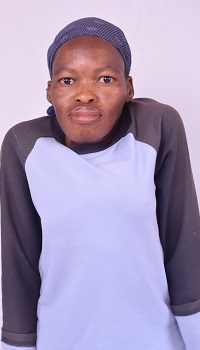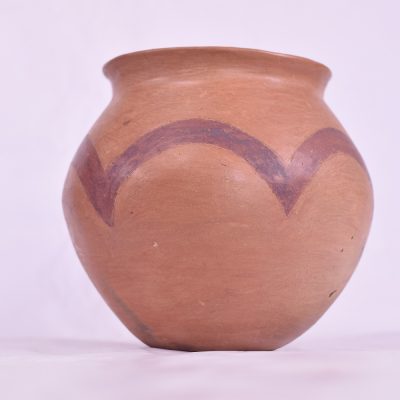My name is Ireen Tsheole. I have a physical disability; my spine is deformed. I live In Makgophane ward in Mochudi with my parents, siblings and my 4-year-old son. I make pottery for a living. I learnt pottery making in 2017 at the national museum, when we were asked to volunteer in promoting the Bakgatla culture.
I decided to learn this skill because I was interested in learning more about the Sekgatla culture. Pottery making has ancestral linkages, so when we go and collect the clay soil, we first have to perform a ritual to notify the ancestors. These pots have different uses, such as cooking, storing traditional beer and water and for ancestral rituals, by traditional healers.
When making clay pots, we buy or collect the soil at sacred places such as hills, and mix it with “moshalakane” -an ingredient that strengthens the pots, firstly I mix the dry ingredients, add a little bit of water then mix just like I’m kneading dough. If a particle of mixed clay falls off the tray, I don’t put it back in the mixture to avoid mixing soil types, which would make the clay pot weak and eventually break. Most people have forgotten the use of clay pots, when they buy, I have to explain their use first. I usually sell my pots from home. I make the pots when there is an order. I have a low clientele base however my regular clients are traditional healers.
Some of the challenges I experience in this business include lack of transportation and manpower to collect the soil, as explained earlier there are linkages between pottery and ancestry, collection of soil and making of the pots is seasonal due to cultural taboos.
Ireen Tsheole


